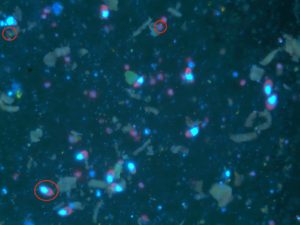Ground Hog Day
I started this post on May 2, but … well, science happened! As Wade has said, “we’re going to make science happen, whether it wants to or not.”
It’s now been two weeks since we started our sampling, and up until last this past Tuesday we were collecting samples every day. Despite the fact that we are still sampling pretty much only surface water with a bucket, that rapidly buried us under backlog of samples that needed to be analyzed. We’ve gone to sampling every other day, and have spent a lot of time catching up. And now we find ourselves in what I like to call the “ground hog day” phase of our cruise. Every day isn’t exactly like the last, but it’s pretty close.
On the day we collect water, we set up 4 different sets of experiments and process water for 7 different measurements. It takes us until about mid-afternoon to get it all done, then we take a short break to exercise, deal with emails from work, have dinner and then go back to work for a few hours more. On our “day off” – well, we just don’t collect new water on that day – we continue processing samples and working on data analysis. That way we can see how our experiments are working and make adjustments if necessary. It’s good to have a routine, you know what you need to do and when. That will change in about a week when we have to start preparing for our last day of science (May 18) – before we cross the Drake Passage we need to have all or samples packed and documented for shipping, and all our lab supplies and equipment packed for storage in Punta Arenas for our next cruise in November.
But, what I really wanted to tell you about are the two beautiful sites where we were sampling. On April 29th we were at our furthest south site in Mikkelsen Bay and on the 30th we were north, across from Rothera, the British Antarctic Station. Both days were sunny, but the sunrise on the 30th was particularly beautiful despite the fact that it was occurring after 9 am. It was so sunny that I was able to capture the shadow of the ship on an iceberg. The water temperature at these sites was also lower, and we started seeing the formation of pancake ice which are gathered into large clusters by the wind and currents. Watching them gently move with the swell of the waves is very relaxing, and as we moved from Mikkelsen Bay north, they grew larger.
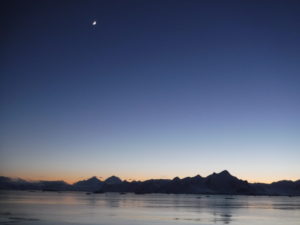
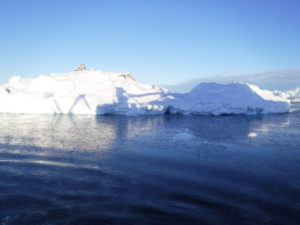
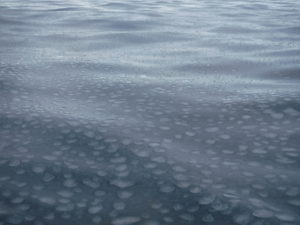
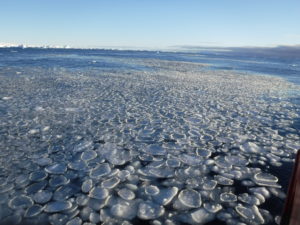
In addition to sun, there was a lot of marine mammal activity near Rothera. Whales and seals were out in abundance, and while the whales didn’t come close, the seals were curious. One group of seals actually turned around and chased after the ship, then swam alongside for several minutes. Unfortunately, my camera had died by then, but I did get some pictures of them when they were catching up to us.
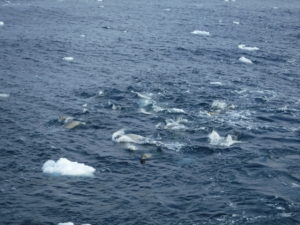
And finally, as promised, I’ve indicated the mixotrophs in the microscope image from the prior post below. The one at the top left is ambiguous, so to confirm it I would look at it under green and red fluorescence, and perhaps at higher power.
